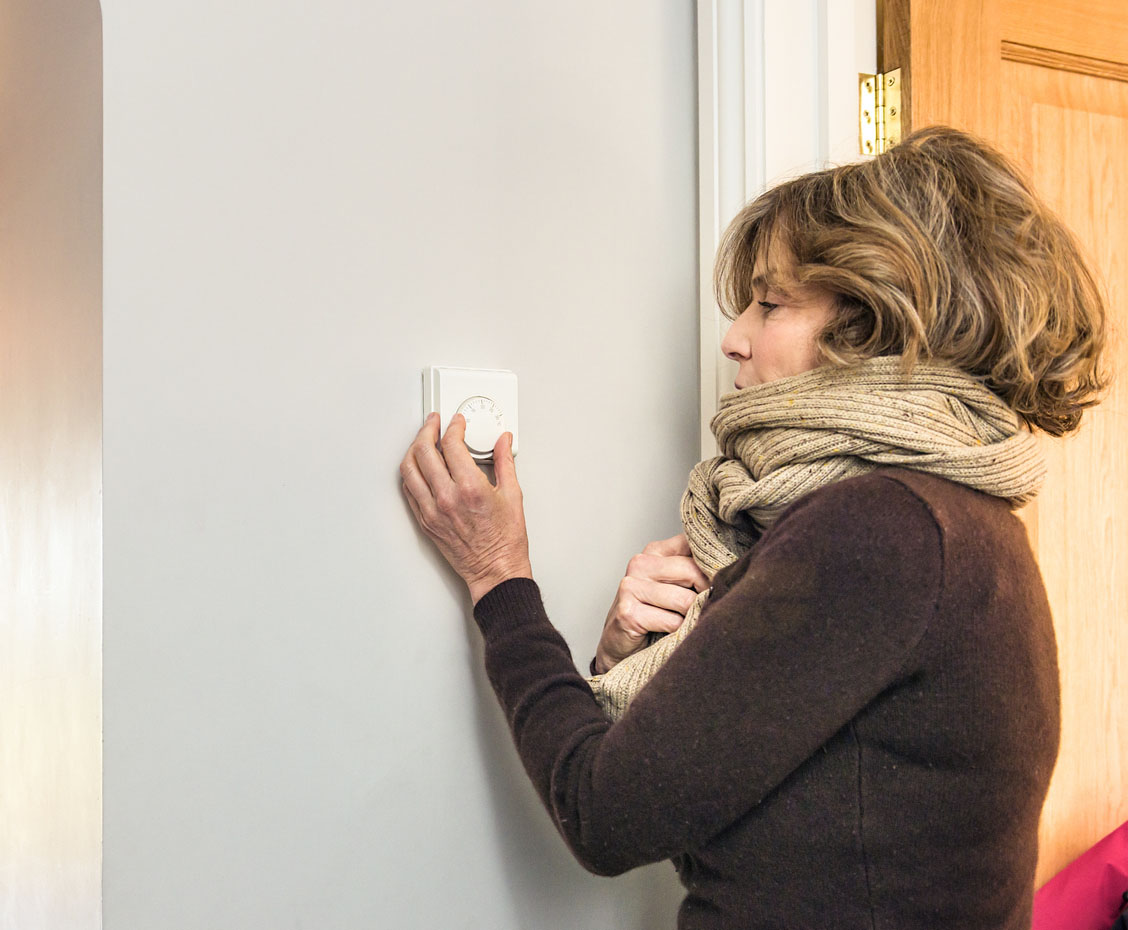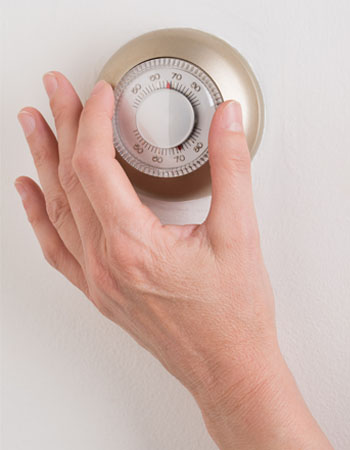

We may earn revenue from the products available on this page and participate in affiliate programs. Learn More ›
Q: Help! My furnace is running, but the heat is not turning on. Why is my furnace blowing cold air?
A: If the home’s heater is not working, it’s crucial to address the issue quickly. A home without heat is not only uncomfortable, but it can be dangerous as well. However, with the cost of a new furnace ranging between $2,614 and $6,310, most homeowners won’t want to replace a furnace until it’s completely necessary.
Wondering, “Why is my heater blowing cold air?” There are many reasons a furnace is not working, are many reasons a heater may be blowing cold air, some of which can be addressed by a handy homeowner, while others may require professional attention. You can also check out some top furnace troubleshooting tips.
The furnace needs time to warm up, or your thermostat is on the wrong setting.

If the furnace kicks on and immediately sends out cold air, give it a minute or two. Heaters need a bit of time to warm up, as it must push out cold air from the vents before sending out hot air. A similar effect occurs when turning on the hot water in the shower—cold water always comes out first. If minutes pass, the heat’s not turning on, and the air is still cool, continue troubleshooting.
Thermostat settings are also a common culprit of heating issues. First, make sure that the thermostat is set to “heat,” and that the setpoint is at a high enough temperature to turn on the furnace. Next, check the thermostat to see if it is set to “on” or “auto.” If it is set to “on,” the furnace blower will continue to run regardless of whether it is actually heating the air. Switching the thermostat to “auto” will ensure that the fan only blows when the furnace is providing heat.
The pilot light is out.
A pilot light is a small gas light that burns continuously to ignite a larger burner, such as a furnace. However, this light can be extinguished if there is a draft, a dirty valve, or a faulty thermocouple (a safety device that shuts off gas when no pilot light is detected). Look for a pilot light on models that are 20 or more years old; newer models do not typically have this feature.
For many homeowners, relighting a pilot light is a straightforward process. Most appliances will come with attached directions. If the light continues to go out after following the steps and you’re sure there’s no draft blowing it out, a faulty thermocouple may be to blame. Most homeowners prefer to call in a furnace technician to assess and replace this part.
The gas supply is weak or off.
Furnaces require a steady supply of gas to the burners to generate heat. If the gas supply is insufficient, the furnace will deactivate as a safety measure, thus blowing out cold air. To assess this, simply check that the gas valve is turned on by ensuring that the valve lever is parallel with the gas supply pipe. Check other gas appliances in the home, such as the oven, to determine whether they receive sufficient gas. Call in a professional if the gas valve is on and the heater is still not supplying warm air.
Dirt and grime are on the flame sensors.
For furnaces without pilot lights, flame sensors (also known as flame rods or flame detectors) are used to ensure proper heat. If the flame rod is covered in dirt or grime, it can cause the burner to shut off. As a result, the heater will start blowing cold air, or it may quickly cycle between warm and cold.
Fortunately, this issue can be resolved by cleaning the flame sensor. Homeowners who are familiar with furnace components can quickly clean the sensor themselves, or they can enlist the services of an HVAC technician to clean it out.

The filter is dirty and restricts airflow, or the condensate lines are clogged.
Any airflow obstruction will limit a furnace’s ability to heat the home effectively. A dirty air filter restricts airflow into the furnace, causing it to run longer until it overheats and stops sending out hot air altogether. As a general rule, homeowners should change the furnace filter every 90 days or when it is gray and covered in dust or lint. If the furnace is still blowing cool air a few hours after replacing air filters, call in a professional.
Another potential source of restriction is condensate blockage, recognized by the telltale sign of water pooling around the furnace. High-efficiency gas heaters create water (also known as condensate) as they run, and this condensate is emptied through a drain line. Water will back up into the furnace if that line is blocked—whether by dust, dirt, mold, or ice. This will activate an overflow kill switch to shut down the heater to prevent water damage. Handy homeowners can simply clear out the blockage in the condensate lines, though it is recommended to call in a professional if the condensate pump itself is broken.
The ductwork is damaged.
It is also possible that the furnace itself is functioning as it should, but there is damage to the ductwork that carries the heat throughout the home. If there are holes and cracks in the ductwork, cold air from the attic could enter the air ducts, while warm air could leak out by the time it reaches the vents. Ductwork damage may also rear its head in the summer months, resulting in inefficient home cooling. The best way to fix this issue is to seal the ducts as soon as possible.

If you can’t identify the source of the issue, call a professional to inspect your furnace or HVAC system.
If all of the above fixes don’t solve the problem and you can’t identify the source of the issue, call a professional to inspect the furnace or HVAC system. They can provide additional insights, make home heating repairs, and help determine whether it’s time to buy a new furnace. An HVAC professional can also provide information about different heating solutions, such as installing a heat pump versus a furnace.
Routine maintenance can prevent future problems.
As is often the case with home appliances, routine maintenance is the key to preventing future problems. Preventative care can help reduce the likelihood of a problem arising, as well as flag an issue early before it causes a shutdown. It is recommended to follow the maintenance steps laid out in the owner’s manual that came with the furnace, as well as these additional preventative measures.
- Regularly replace air filters. It is recommended to replace filters every 90 days or when the filters appear dirty. At a minimum, this should be done once per season.
- Inspect venting systems and accessory units. Before every heating season, ensure that pipes, humidifiers, electronic air cleaners, and more are secure. Look for signs of water leakage.
- Clean the interior and exterior of the unit. Make sure that the blower wheel or fan motor and blade, as well as the burner, are clean and free of rust or corrosion. Double-check the electrical connections and controls. For homeowners that are not familiar with HVAC systems, this is best left to a professional. This should be done before each heating and cooling season.
